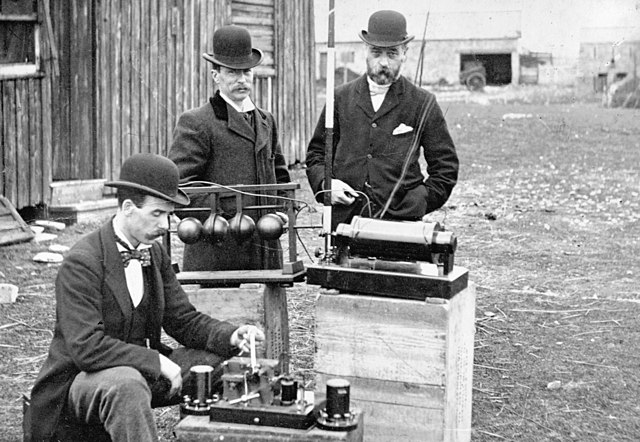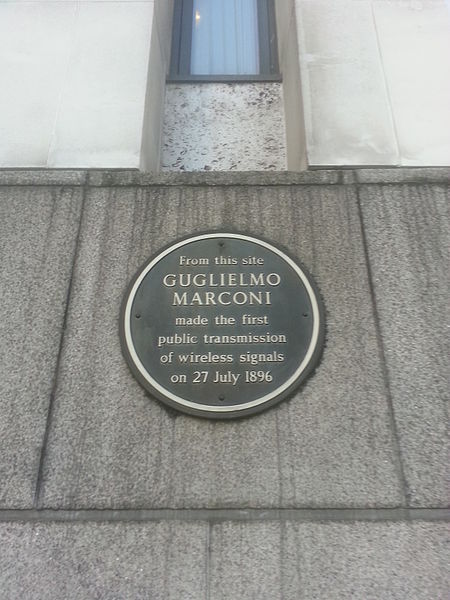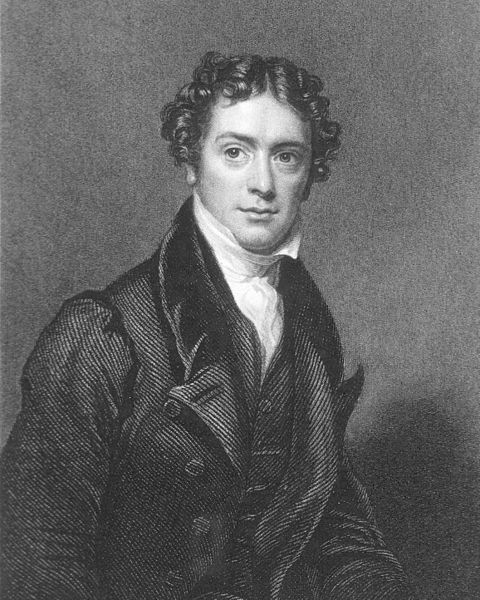Guglielmo Giovanni Maria Marconi, 1st Marquis of Marconi was an Italian inventor and electrical engineer, known for his creation of a practical radio wave–based wireless telegraph system. This led to Marconi's being credited as the inventor of radio, and he shared the 1909 Nobel Prize in Physics with Karl Ferdinand Braun "in recognition of their contributions to the development of wireless telegraphy".
Marconi in 1909
Marconi's first transmitter incorporating a monopole antenna. It consisted of an elevated copper sheet (top) connected to a Righi spark gap (left) powered by an induction coil (center) with a telegraph key (right) to switch it on and off to spell out text messages in Morse code.
British Post Office engineers inspect Marconi's radio equipment during a demonstration on Flat Holm Island, 13 May 1897. The transmitter is at centre, the coherer receiver below it, and the pole supporting the wire antenna is visible at top.
Plaque on the outside of the BT Centre commemorates Marconi's first public transmission of wireless signals.
Electrical engineering is an engineering discipline concerned with the study, design, and application of equipment, devices, and systems which use electricity, electronics, and electromagnetism. It emerged as an identifiable occupation in the latter half of the 19th century after the commercialization of the electric telegraph, the telephone, and electrical power generation, distribution, and use.
Electrical engineering
The discoveries of Michael Faraday formed the foundation of electric motor technology.
Guglielmo Marconi, known for his pioneering work on long-distance radio transmission
A replica of the first working transistor, a point-contact transistor







